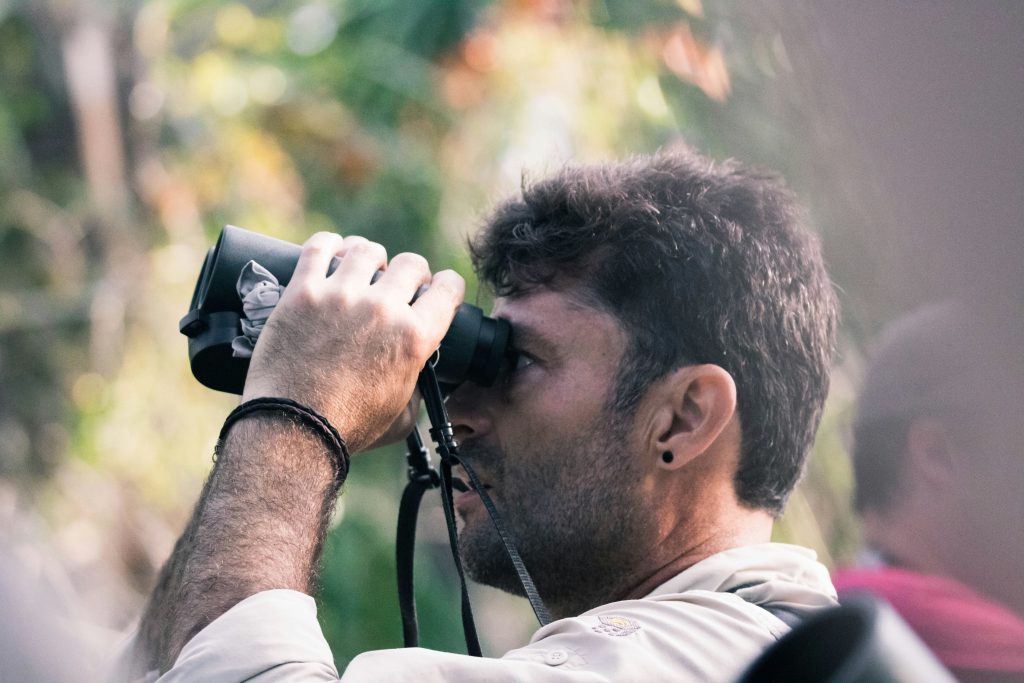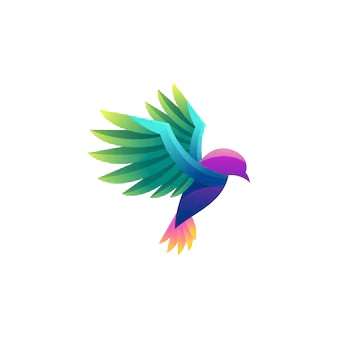
Birdwatching, while enjoyable, comes with responsibilities. Ethical birdwatching ensures that our activities do not harm the birds or their habitats. By following birdwatching etiquette, we can help preserve the natural world and enjoy this hobby sustainably.
Respect Wildlife and Their Habitats
- Keep a Safe Distance: Always observe birds from a distance to avoid disturbing them, especially during breeding seasons. Use binoculars or a spotting scope for close-up views.
- Stay on Designated Paths: Stick to established trails and paths to protect vegetation and minimize habitat disturbance.
- Do Not Disturb Nests: Avoid approaching or photographing nests. Nesting birds can be particularly sensitive to disturbances, which might cause them to abandon their nests.
- Avoid Feeding Birds: Feeding birds can alter their natural behaviors and diets, leading to health problems and dependency on human-provided food.
- Minimize Noise: Keep noise levels low. Loud noises can startle birds and other wildlife, disrupting their natural activities.
Ethical Photography
If you’re into bird photography, follow these ethical guidelines to ensure you don’t harm the birds or their environment:
- Prioritize Bird Welfare: Never sacrifice a bird’s safety or well-being for a photograph.
- Use Proper Lenses: Use a telephoto lens to capture images from a distance, avoiding the need to get too close.
- Respect Sensitive Areas: Avoid entering restricted areas or sensitive habitats that are off-limits to protect bird populations.
- Avoid Artificial Lighting: Flash photography can disturb birds, especially nocturnal species. Use natural light whenever possible.
Etiquette with Fellow Birdwatchers
- Share Space Respectfully: Be mindful of other birdwatchers. Give others space to observe and enjoy birds without interference.
- Share Information: If you spot a rare or interesting bird, share the information with others. Birdwatching is a community activity, and sharing sightings can enhance everyone’s experience.
- Be Courteous: Practice good manners and be respectful of other birdwatchers’ experiences.
Birdwatching and Technology
Technology has revolutionized birdwatching, making it easier to identify species, log sightings, and share information with the birdwatching community.
Bird Identification Apps
Bird identification apps have become essential tools for birdwatchers. These apps provide detailed information about bird species, including images, descriptions, and audio recordings of bird calls. Some popular bird identification apps include:
- Merlin Bird ID: Developed by the Cornell Lab of Ornithology, this app helps identify birds through a series of questions or by uploading a photo.
- eBird: Also from the Cornell Lab, eBird allows birdwatchers to log their sightings and explore data on bird distribution and abundance.
- Audubon Bird Guide: This app offers a comprehensive field guide to North American birds, including photos, sounds, and range maps.
Online Birdwatching Communities
Joining online birdwatching communities can enhance your birdwatching experience by connecting you with fellow birdwatchers and providing access to valuable resources:
- Birding Forums: Online forums like BirdForum and the American Birding Association’s forum are great places to discuss birdwatching, share sightings, and seek advice.
- Social Media Groups: Facebook and other social media platforms host numerous birdwatching groups where you can connect with other birders, share photos, and stay updated on local birding news.
- Birdwatching Blogs: Many experienced birdwatchers maintain blogs where they share tips, trip reports, and insights into bird behavior and identification.
Birdwatching Gear and Accessories
While binoculars and field guides are essential, there are other gear and accessories that can enhance your birdwatching experience:
Spotting Scopes
A spotting scope is a high-powered telescope designed for birdwatching. It provides greater magnification than binoculars, allowing you to observe distant birds in detail. Spotting scopes are particularly useful for watching waterfowl and shorebirds.
Tripods
A sturdy tripod is essential when using a spotting scope or taking long-exposure photographs. It stabilizes your equipment, reducing motion blur and providing a steady view.
Field Bags and Vests
Field bags and vests with multiple pockets allow you to carry all your birdwatching gear comfortably. Look for options with compartments for binoculars, field guides, notebooks, and other essentials.
Weather-Appropriate Clothing
Invest in clothing suitable for various weather conditions. Layering is important for adjusting to changing temperatures. Waterproof and windproof outer layers are essential for staying comfortable during inclement weather.
Bird Feeders and Nesting Boxes
Setting up bird feeders and nesting boxes in your backyard can attract birds, providing opportunities for close observation. Choose feeders that cater to the specific needs of the birds in your area and place them in safe locations away from predators.
Birdwatching and Education
Birdwatching is an excellent educational tool, providing opportunities to learn about birds, ecosystems, and environmental conservation. Here are some ways to use birdwatching as an educational resource:
Schools and Nature Centers
Many schools and nature centers offer birdwatching programs and workshops. These programs can teach students about bird identification, behavior, and conservation. Participating in such programs can spark a lifelong interest in birds and nature.
Birdwatching Books and Magazines
Reading books and magazines about birdwatching can deepen your knowledge and enhance your appreciation for birds. Some popular birdwatching books include:
- “The Sibley Guide to Birds” by David Allen Sibley: A comprehensive field guide to North American birds.
- “Birds of North America” by Kenn Kaufman: A user-friendly field guide with detailed illustrations and information.
- “What It’s Like to Be a Bird” by David Allen Sibley: An engaging exploration of bird behavior and biology.
Birdwatching magazines such as BirdWatching, Audubon, and Birdwatch provide articles on bird identification, conservation, and birding hotspots.
Birdwatching Tours and Expeditions
Joining guided birdwatching tours and expeditions can be an enriching experience. Expert guides can help you find and identify birds, providing valuable insights into their behaviors and habitats. These tours often visit prime birdwatching locations, offering opportunities to see rare and exotic species.
Birdwatching and Mental Health
Birdwatching has been shown to have positive effects on mental health. Spending time in nature and observing birds can reduce stress, anxiety, and depression. The peaceful and meditative aspects of birdwatching promote mindfulness and relaxation. Additionally, birdwatching provides a sense of accomplishment and joy, enhancing overall well-being.
Therapeutic Benefits
- Stress Reduction: The calming effect of nature and the focus required for birdwatching can help reduce stress levels.
- Mindfulness: Birdwatching encourages mindfulness, as you need to be fully present to observe and identify birds.
- Physical Activity: Walking and hiking while birdwatching provide physical exercise, which is beneficial for both physical and mental health.
The Future of Birdwatching
As technology continues to evolve, so does the world of birdwatching. Advances in digital tools, such as artificial intelligence for bird identification and augmented reality for immersive experiences, are likely to enhance the way we observe and study birds.
Virtual Birdwatching
Virtual birdwatching experiences, such as live-streamed bird cams and virtual reality birding tours, allow people to enjoy birdwatching from the comfort of their homes. These technologies can make birdwatching more accessible to individuals who may not be able to venture outdoors.
Citizen Science and Big Data
The growing involvement of birdwatchers in citizen science projects is contributing to large datasets that help researchers monitor bird populations and trends. This data is crucial for conservation efforts and understanding the impacts of climate change on bird species.
Conclusion
Birdwatching is a multifaceted hobby that offers numerous benefits, from personal enjoyment and mental health improvements to educational opportunities and contributions to conservation. Whether you are observing common backyard birds or rare species in exotic locations, birdwatching provides a unique way to connect with nature and appreciate the diversity of avian life. By following ethical guidelines, utilizing technology, and continually learning, you can make the most of your birdwatching adventures and contribute to the preservation of our planet’s incredible birdlife. So, grab your binoculars and field guide, and embark on a journey to explore the fascinating world of birds. The avian wonders await you!
